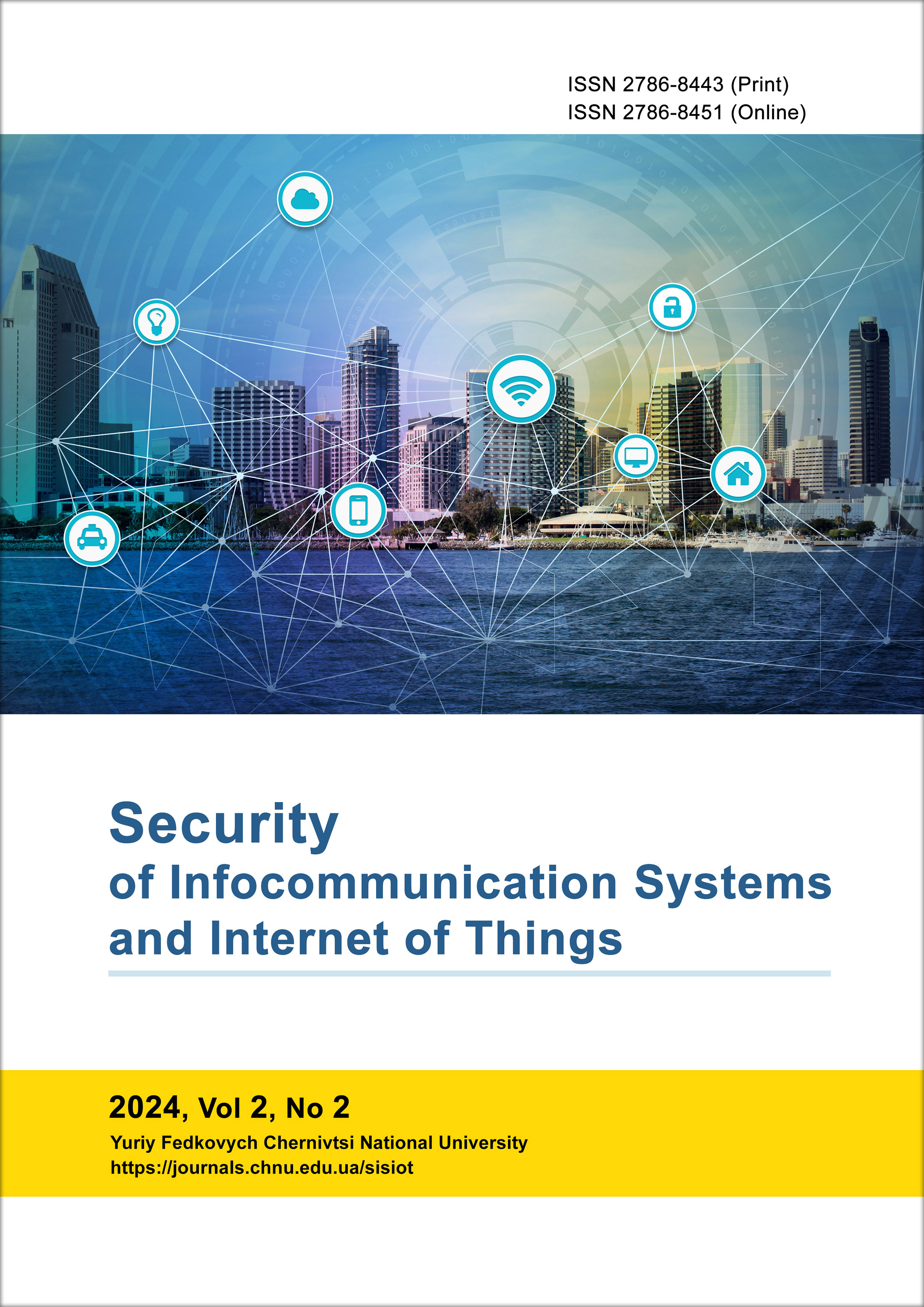Управління ризиками інформаційних загроз в IT за допомогою інтелектуальних систем виявлення дезінформації
DOI:
https://doi.org/10.31861/sisiot2024.2.02004Ключові слова:
інтелектуальна система, виявлення дезінформації, штучний інтелект, машинне навчання, глибинне навчанняАнотація
У статті описано інтелектуальну систему виявлення дезінформації, що протидіє поширенню недостовірної інформації в інтернеті. Використно сучасні методи обробки тексту і даних, зокрема машинне навчання та обробку природної мови, для точної ідентифікації фейкових новин. Основною функцією системи є надання прогнозованої оцінки достовірності інформації, що допомагає користувачам приймати обґрунтовані рішення, мінімізуючи ризик потрапляння під вплив дезінформації. Тестування системи в реальних умовах підтвердило її здатність швидко ідентифікувати фейкову інформацію, сприяючи інформаційній грамотності користувачів та підвищенню їх обізнаності щодо інформаційних загроз. Така система є важливим елементом посилення інформаційної безпеки, що особливо актуально для України в умовах численних інформаційних викликів. Система також відіграє важливу роль у керуванні ризиками інформаційних загроз в ІТ. Результати дослідження дали змогу виявляти потенційні загрози у вигляді дезінформації, які можуть бути використані для маніпуляцій громадською думкою чи підриву довіри до інституцій. Інтеграція інтелектуальних систем у процеси управління ризиками дозволяє вчасно реагувати на загрози, знижуючи їхній вплив на ІТ-інфраструктуру та зберігаючи репутацію організацій. Система може бути застосована не тільки в ІТ-секторі, а й у журналістиці, освіті, державному управлінні, де вона допомагає запобігати дезінформації, що має серйозний соціальний вплив. Її також можна використовувати для моніторингу та аналізу інформаційних потоків, що сприяє виявленню і протидії неправдивій інформації. Таким чином, розроблена система є важливим кроком у посиленні інформаційної безпеки, забезпечуючи захист від фейкових новин та слугуючи ефективним інструментом управління ризиками інформаційних загроз у сучасному цифровому суспільстві.
Завантажити
Посилання
S. S. Iyengar et al., "Fake news detection using machine learning algorithms," International Journal of Advanced Research in Computer Science and Software Engineering, vol. 9, no. 3, pp. 234-241, 2020.
A. K. Singh et al., "Passive aggressive classifier for fake news detection," Journal of Intelligent Information Systems, vol. 57, no. 2, pp. 257-271, 2021.
A. K. Mishra et al., "Multinomial naive Bayes for text classification," Journal of Information and Communication Technology, vol. 20, no. 2, pp. 147-162, 2020.
J. Hirschberg and C. D. Manning, "Advances in natural language processing," Science, vol. 349, no. 6245, pp. 261-266, 2015.
C. C. Aggarwal and C. X. Zhai, Mining Text Data, Springer, 2012.
T. M. Mitchell, Machine Learning, McGraw-Hill, 1997.
G. Salton and C. Buckley, "Term-weighting approaches in automatic text retrieval," Information Processing & Management, vol. 24, no. 5, pp. 513-523, 1988.
A. McCallum and K. Nigam, "A comparison of event models for naive Bayes text classification," in Proceedings of the 15th Int. Conference on Machine Learning, 1998, pp. 41-48.
K. Crammer, O. Dekel, J. Keshet, S. Shalev-Shwartz, and Y. Singer, "Online passive-aggressive algorithms," Journal of Machine Learning Research, vol. 7, pp. 551-585, 2006.
D. M. W. Powers, "Evaluation: From precision, recall and F-measure to ROC, informedness, markedness and correlation," Journal of Machine Learning Technologies, vol. 2, no. 1, pp. 37-63, 2011.
S. V. Stehman, "Selecting and interpreting measures of thematic classification accuracy," Remote Sensing of Environment, vol. 62, no. 1, pp. 77-89, 1997.
P. Singh et al., "A study on fake news detection using machine learning algorithms," International Journal of Advanced Research in Computer Science and Software Engineering, vol. 9, no. 3, pp. 234-244, 2020.
A. Kumar and V. Sharma, "Fake news detection using machine learning: A review," Journal of Intelligent Information Systems, vol. 56, no. 2, pp. 257-275, 2020.
Y. Wang et al., "Deep learning for fake news detection: A survey," IEEE Transactions on Neural Networks and Learning Systems, vol. 31, no. 1, pp. 231-244, 2020.
J. Thorne and A. Vlachos, "Fact-checking for fake news detection," Journal of Data and Information Quality, vol. 10, no. 2, pp. 1-23, 2018.
F. C. Santos, "Artificial intelligence in automated detection of disinformation: A thematic analysis," Media Journal, vol. 4, no. 2, pp. 679-687, 2023.
J. Osborne and E. Briant, "AI-driven tools for risk management in IT security and misinformation detection," Cyber Security Review, vol. 6, no. 2, pp. 120-133, 2021.
R. Khan and A. Shaikh, "Detection of fake news and its implications on IT risk management," International Journal of Digital Information, vol. 9, no. 3, pp. 210-225, 2022.
P. Dahlgren, "Risk mitigation strategies through AI-assisted disinformation detection," Journal of Information Security Research, vol. 12, no. 5, pp. 340-354, 2021.
K. Jain and T. Verma, "Leveraging AI for proactive risk management against misinformation threats in IT infrastructure," Cyber Intelligence Review, vol. 9, no. 2, pp. 70-84, 2024.
Опубліковано
Номер
Розділ
Ліцензія
Авторське право (c) 2024 Безпека інфокомунікаційних систем та Інтернету речей

Ця робота ліцензується відповідно до ліцензії Creative Commons Attribution 4.0 International License.









